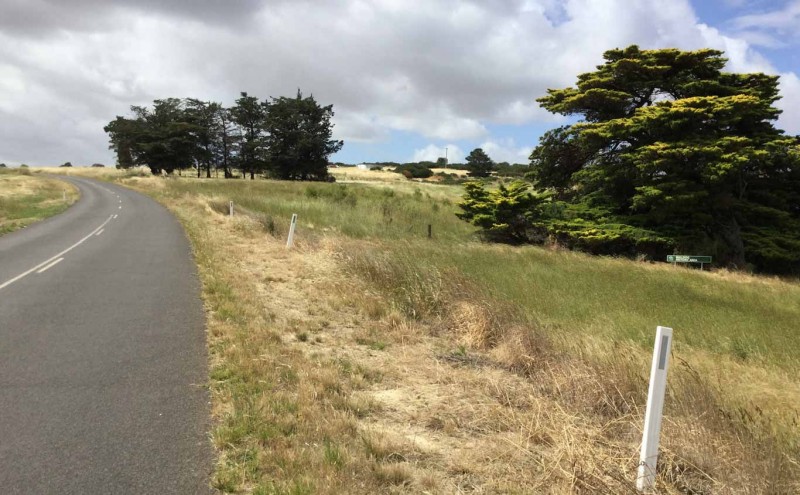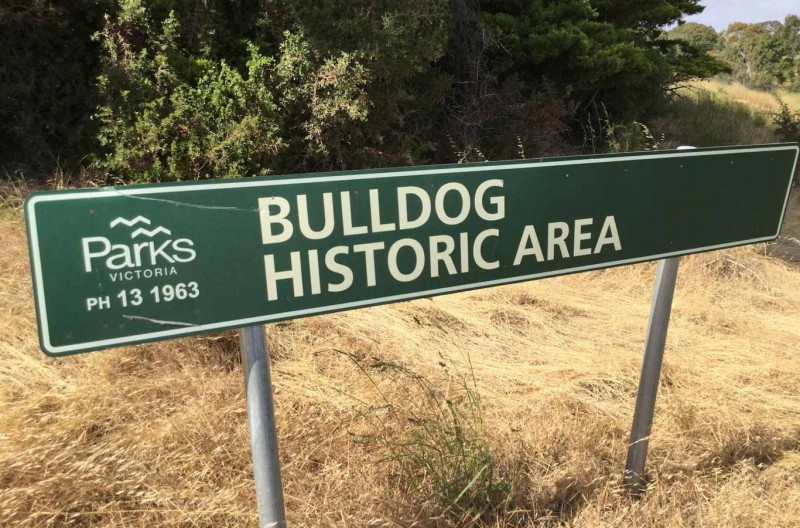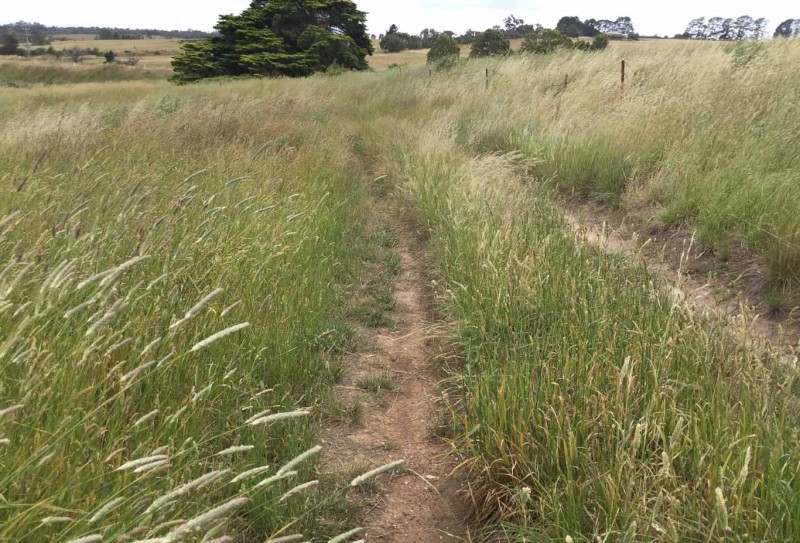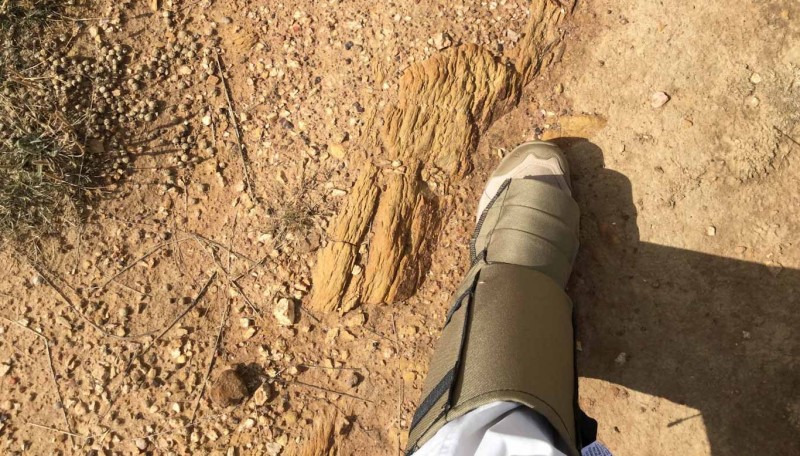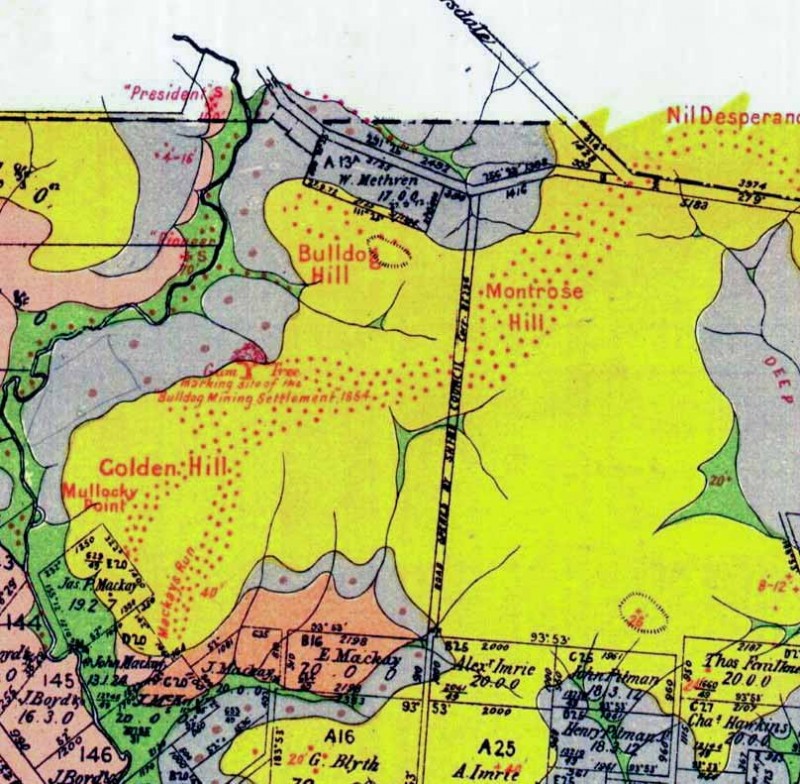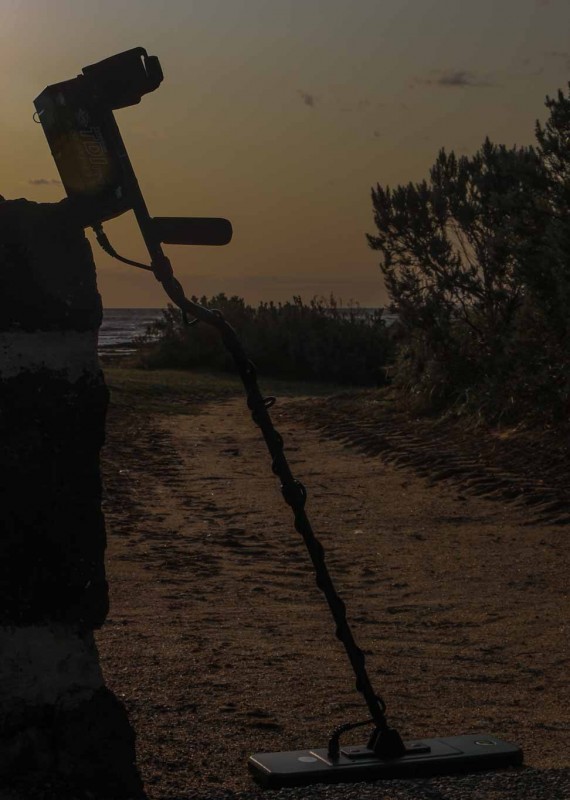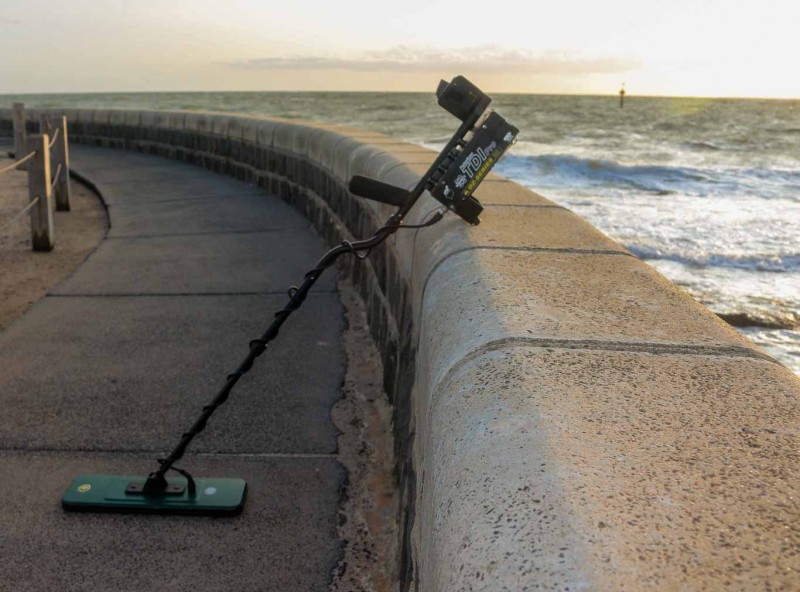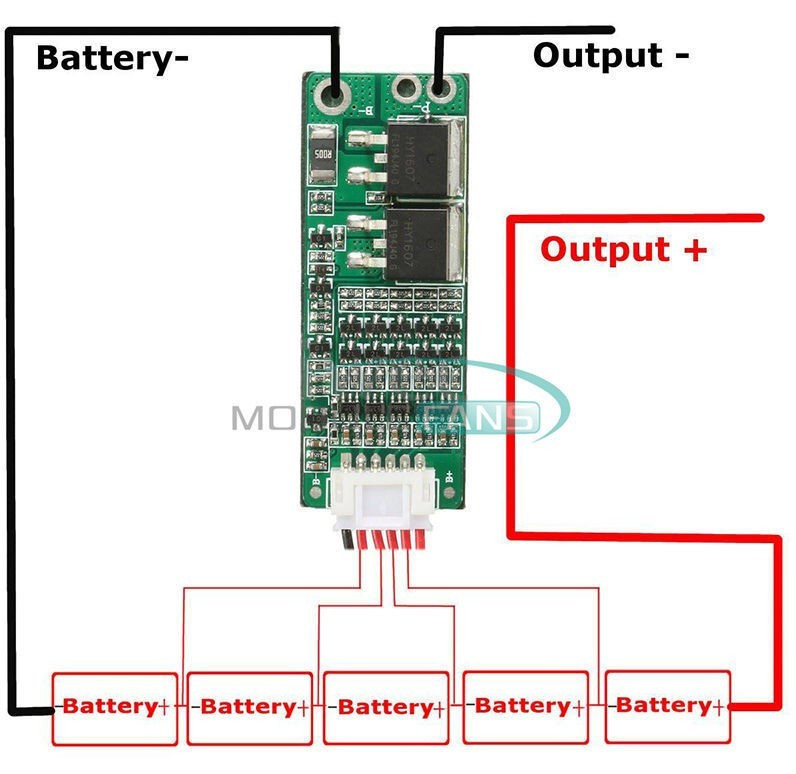-
Posts
248 -
Joined
-
Last visited
Content Type
Forums
Detector Prospector Home
Detector Database
Downloads
Everything posted by karelian
-

Research Goes Beyond Google Earth.. Bulldog Diggings
karelian replied to karelian's topic in Detector Prospector Forum
This area is easy to miss, at 100 kph if you blink you will miss it. The grass is tall and the season warm, so I was careful about snakes. The ground on the hill and sides was best regarded as shallow, even in areas not surfaced. There was signs of wildlife with one Wallaby giving me a suspicious look. Large trees were absent with only a couple exceptions at most. Too many small areas of interest hidden away, too easy to blink and you miss them. All the best. -
My research starts with mining reports and articles. Internet searches and downloads which all help a lot. At the end of the day I need to get out of my chair, get in the car and have a look. Google earth images only go so far. A classic example is the Illabrook area in Victoria, Australia. Outside the Golden Triangle, outside of the packaged map books on offer. The areas has deep lead mines but also shallow alluvial flats, hill tops and gullies. My interest was focused on the Bulldog Diggings Historical Area. I don't always start off by swinging a detector, sometimes the aim is to simply satisfy my curiosity. You read about an area and you just want to walk the ground and have a look. I know from reports that the area produced nuggets measured in the ounces. The ground varied in depth from two to four feet in the shallowest areas. Large areas were surfaced and that miners were making 'fair wages'.. The Bulldog area showed a lot of surface work, heavy dirty quartz was present mixed with other indicators. Since work provided the opportunity to 'take a look' I did. I was not discouraged. Should thank the boss for the extended lunch break whilst he snoozed in the car. Pity he won't let me take my detector to work.. I will return and see what is hiding in those cracks.. Images show surface workings on the hill top and sides running into the gully. Map shows the areas examined and the Google Earth images also cover the relevant ground, the scars in the landscape clearly visible from space.. Those early miners put in a lot of hard work to alter the landscape to this extent. Hope this has been of some interest, I certainly enjoyed my lunch break. All the best.
-

This Might Be My Last New White's Metal Detector
karelian replied to karelian's topic in White's Metal Detectors
I'd say my GMX is fully set up, there will be a anti-glare screen cover added at a later date. The machine just had it's first visit to the goldfields. Started at Dunolly and Moliagul and finished at Maryborough. All within the Golden Triangle area known for nuggets. The focus of the trip was to see how it handles the varied ground conditions, hot rocks etc. Quite well. The concentric coil was used and it was able to manage hot ground by reducing sensitivity. It is too early in my learning curve to judge but first impressions were good. Attention to detail at each location helps a lot when setting the machine up. The level or sensitivity, SAT speed etc need to be balanced for each location, the goal being smooth operation which was achieved at all the different areas. If you run it too hot it will drive you nuts, ease off a bit and it runs very well. Still need to explore settings and get more of a feel for the machine. No surprise, in hot ground the sensitivity needs to come down, it does handle the ground well and hot rocks were better managed than other VLF machines I have used. So the first impression is a very positive one. I am yet to play with the iron disc, many more user hours required in the goldfields. I will focus more on playing with the settings and some testing of performance. I though a small pick or digging tool would be perfect for use with the GMX, I was wrong. The Garrett tool was just too light, needed a more serious pick to get the job done. I'll give the GMX a good run over the next few months and as I gain experience with it I'll have a better idea of how to best use this machine. All the best. -

This Might Be My Last New White's Metal Detector
karelian replied to karelian's topic in White's Metal Detectors
The final personal touch arrived in the mail from the UK. Cordura covers, instead of neoprene. I wanted durability and scratch resistance. I'll do a few modifications on the covers to make for a better fit and add the other personal touchs as well. Basic setup for 90% of the time, the only variation being either external speaker or headphone. Again headphones being the norm. The screen has the original packaging protector and now the Protector covers as well, so no scratches for a while at least. -
By all means boost the battery pack, pays to keep the voltage on the Tdi Sl at or just under 16 volts. My brother has just got a 3D printer and I'm just amazed at how good they are. A friends SL developed a gentle 'hum' at 16 .8 volts with a freshly charged battery pack. But no issues under 16 volts. That was enough for me to curb my enthusiasm and set the limit at just under 16 volts. I achieved this by using a smart charger which allows me to control the voltage of each of the 4 cells. Given that White's is no more, I'm looking at preserving the machines I have for as long as possible. Not looking to push the envelope too far. It is a risk vs gain equation. I'm with Jim in Idaho on this one. All the best.
-

Garrett Acquires White's Electronics!
karelian replied to Steve Herschbach's topic in White's Metal Detectors
Does all this mean the dream of a Garrett ATX refashioned in a lighter better balanced body, perhaps resembling something like a TDI SL may become reality? We can only wait and see. I would be surprised to see another White's branded metal detector sold. White's is dead and Garrett is stronger for it. -

Tdi Pro 18v + Battery Pack. 5 X 18650 With Dedicated Charger
karelian replied to karelian's topic in White's Metal Detectors
Yes the extra voltage will provide a small increase in performance over the standard battery regardless of other variables, including ground balance. So the same machine with ground balance on operating at the same location will see a small increase with the higher voltage battery. The combinations of a modified Tdi Pro and the higher output battery will combined increase depth by only a small margin. For example: the standard Pro with standard battery will detect 1 grain at 9 cm, modified pro with standard battery gets 10 cm, modified Pro with high voltage battery 11 cm. Baby steps all the way. So no dramatic increases, the main benefits being smoother threshold and the peace of mind that the machine is operating at its peak performance.. When circumstance change I will take the modified Pro with higher voltage battery prospecting and beach detecting putting them to the full test, same goes for the White's GMX. Air tests are a poor substitute for real operational use in the field. -

Tdi Pro 18v + Battery Pack. 5 X 18650 With Dedicated Charger
karelian replied to karelian's topic in White's Metal Detectors
I've spent time using the Tdi Pro machines and have noticed that they vary a lot in their performance. One day you can push gain all the way with no issues, other days three or four is as high as you can go if smooth operation is the goal. Contrast the Tdi Sl, almost always it will let you push the gain to max with rare exceptions. Push it and it is still smooth and stable. This is particularly true in urban areas where EMI is always present to some degree. In my view the Pro machines are deeper most of the time, even in bad EMI but the SL sure is one smooth operator.. -

Tdi Pro 18v + Battery Pack. 5 X 18650 With Dedicated Charger
karelian replied to karelian's topic in White's Metal Detectors
First test using the higher voltage battery matched with Miner John 14 x 8 mono. No issues with smoke or fire, everything works well so far. Lousy EMI today, lots of people working from home etc, Picked up 12 wifi connections on my ipad... Lots of EMI. Might retest super early in the morning. I could not get gain up very high, max was 6 with the modified Pro today and even then it was playing up. Super stable and smooth at a gain of 3... so I pushed it to 6. Ground balance was off, conductivity was in ALL and pulse delay was 10. A one grain ingot came in at 10cm, or a 1 cm increase over the stock battery. The half gram gold coin was 37cm or a 2 cm increase over the stock battery. The half Sovereign gold coin was 46cm for a 1 cm increase of the stock battery. The conditions today warrant a retest at a later date. When circumstances allow I'll take the machine down to the beach and perhaps even the goldfields. Not possible now. So no issues with the battery pack itself, machine behaved well. Very small gain in performance over standard battery pack, but there is an increase. I can see myself using two of these higher voltage packs in an eight hour day, to maintain the peak performance and not run down the packs too much. I removed the heat shrink and will reapply later with lessons learnt from my first attempt. Parts list etc more to come later. -

Tdi Pro 18v + Battery Pack. 5 X 18650 With Dedicated Charger
karelian replied to karelian's topic in White's Metal Detectors
Researching the Reidman battery pack I notice a post by Reg the Tdi Guru (RIP), where he state the higher voltage is best matched with either White's or Miner John coils. Mention was made of the resistance of Minelab compatible coils.. So I'll conduct the comparisons between the standard battery pack and the 5 cell pack with White's and Miner John coils. I'll try and keep it simple and just do an air test comparison. Coming soon. -

Tdi Pro 18v + Battery Pack. 5 X 18650 With Dedicated Charger
karelian replied to karelian's topic in White's Metal Detectors
A bit late in my day for testing, but you can see the Tdi Pro factory battery is a super tight fit in the battery compartment. The red higher voltage battery is a bit smaller with more spare air inside the compartment. Again more to come in the following days, testing and parts list. -

Tdi Pro 18v + Battery Pack. 5 X 18650 With Dedicated Charger
karelian replied to karelian's topic in White's Metal Detectors
-

Tdi Pro 18v + Battery Pack. 5 X 18650 With Dedicated Charger
karelian replied to karelian's topic in White's Metal Detectors
Progressed to wiring up the plug, again using the diagram. Fiddly job but got it done. Long way from 14,8 volts.. Testing and parts list etc still to come. All the best. -

Tdi Pro 18v + Battery Pack. 5 X 18650 With Dedicated Charger
karelian replied to karelian's topic in White's Metal Detectors
Wired and soldered the PCB to the cells as per diagram. Used electrical tape to cover all connections, then moved on to use the heat shrink wrap. Started with a jet lighter, bad idea. Just use a hair dryer on hot. Next time it will be a bit better, I hope. -

Tdi Pro 18v + Battery Pack. 5 X 18650 With Dedicated Charger
karelian replied to karelian's topic in White's Metal Detectors
Battery tabs soldered together, everything held in place with hot glue. Next step is to connect the PCB . After that I'l take some photographs and get started on the plug and shrink wrap plastic covers. -

Tdi Pro 18v + Battery Pack. 5 X 18650 With Dedicated Charger
karelian replied to karelian's topic in White's Metal Detectors
The pcb is there to regulate the voltage on the battery pack, so that it will not over charge or over discharge. When plugged into the charger designed for 5 x 18650, I believe it stops at 21.5 Volts max. PCB also regulates the charge so the cells are evenly charged. I will do a parts list and links when I do the full write up. Quick tests to see if there is a noticeable improvement in detector performance. If the first pack works I have enough parts for a spare as well, both will then belong to the modified Tdi Pro I am currently using. A modified Pro with upgraded battery pack, my idea of a serious beach machine.. -
A year full of distractions, so yes I kind of did forget about this project. All parts had been ordered and arrived in good time. Assembly to follow in the next few days... with photographs and a performance test on the modified Pro I still have.. I'll take it steady and do it right, get the soldering tidy and follow the plan..
-

This Might Be My Last New White's Metal Detector
karelian replied to karelian's topic in White's Metal Detectors
First thing that stands out with the GMX is that the inbuilt speaker is not as loud as I would like, being waterproof that is no mystery. This type of machine would rarely use the inbuilt speaker as most users would be using headphones. An amplified external speaker like a Nokia MD-11 on hot days and out in the bush, but headphones would be the norm. The supplied Whites headphones are decent, but no volume control.. decent but not great. The arrival of a pair of Grey Ghost Amphibian headphones for the GMX illustrates the importance of high quality audio. Simply fantastic quality, performance is great. The volume control is most welcome, at max the headphones are 'loud'. Tested with targets there is a performance gain, yes it is marginal but it is real. Add extra comfort, superior performance that really cuts out external noise. Well worth the investment and highly recommended. When considered against the cost of fuel and accommodation plus other expenses when out prospecting this has been a good investment. An investment in performance and quality. Peace of mind knowing my 'setup' will be performing at its peak. The Grey Ghost headphones are simply superb. All the best. -

This Might Be My Last New White's Metal Detector
karelian replied to karelian's topic in White's Metal Detectors
A long answer to a short question. The supplied White's headphones are decent, they will do the job. If you are out of the water then use the adapter cable if you already have 'high end' headphones. If not the White's are ok. Because I have a 'collection' of machines I have also quite a few headphones. I've been detecting since the early 80's, only in the last few years did I purchase the Sunray Pro Gold headphones. So in comparison to Sunray the White's are just Ok, but compared to what I was using years ago, they are very good.. Any headphone set will be much better than the inbuilt speaker. At the end of the day the key is to get the coil over the target. Normally I wait for things to wear out before looking to upgrade, that has been the way with home appliances and metal detector headphones. With White's going out of business I need to look to the future when my GMX is still going strong, but the factory headphones are looking worse for wear. Hence the focus on the Grey Ghost Amphibians, get them while you can... Can always modify gear to fit later on as well using the White's set for parts.. Because none of my current machines have inbuilt wireless audio, the addition of Z link and the Quest wireless system allowed me to enjoy the benefits of modern convenience while continuing on with my older machines. My GMX will see use as a 'backpacking' detector, going into remote areas where the factory waterproof headphones make good sense, as do the Grey Ghosts. Neither the Quest or Z link are robust enough to perform such duties. Both the Quest and Z link systems are compatible with all my Tdi machines, XL Pro, MXT etc. No audio issues or problems so far, wireless headphones are great. Simply plug into any USB port to recharge at the end of the day, at home or in the car. Even use a portable power bank which works perfectly. With a waterproof detector wireless will not always be the first choice. Finally every time I buy a machine I allow a bit extra for bits and pieces so that I can 'adapt' the detector to better fit my needs. Neoprene covers from the UK to protect the screen, Doc's arm cuff cover, folding detector stand.. None of these things are necessary, the motivation is 'want' not 'need'. In my experience the machine works better after the personal touch.. So that is partly true for the Grey Ghost Amphibians.. with a noticeable performance increase over the factory headphones. Quality has a price attached. The package deal from Whites with the adapter cable, headphones and the two coils was great. No 'need' to go and spend more money. If you want better audio with a small gain in performance, then in my experience it requires an additional investment more often than not. -

This Might Be My Last New White's Metal Detector
karelian replied to karelian's topic in White's Metal Detectors
A set of Grey Ghost Amphibian headphones would be my ideal match for the GMX. Very tempted.. -

This Might Be My Last New White's Metal Detector
karelian replied to karelian's topic in White's Metal Detectors
I do not see myself using the White's stock headphones with the GMX out of the water. Waterproof headphones for rare water work only. I'll use the Sunray Pro Gold when wired up with the adapter cable, or the wireless system. The supplied headphones are OK, but most quality aftermarket options blow them 'out of the water'.. -

This Might Be My Last New White's Metal Detector
karelian replied to karelian's topic in White's Metal Detectors
Since I had already purchased the Quest MX Sport adapter cable I decided to get the headphones to match. Just the one cable from the detector to the transmitter. Original idea was to cut and splice to fit the Garrett Z link. Problem was I like the Quest Pro Wireless, just a bit more comfortable. Audio is good with no lag, a quality product. So the GMX wireless headphone challenge has been met. With both the Quest and Z link systems I have the wireless headphone option with all my machines. I'll use the Quest Pro and my loaner machine will use the Garrett. Inexperienced guest users tend to get easily frustrated by the wired headphones and the wireless system is so much more user friendly. Doc's Detecting arm cuff makes for a more comfortable swinging action. Again the machine is not heavy and balances well. There is a neoprene cuff under the Doc's cuff for a better fit, everything is tight and comfortable. For water use the GMX will use the Whites waterproof headphones. Again the old rule is that if you personalize your gear it just feels like it works better.. a set of covers to protect the screen will be the final add on. All the best, Karelian -

This Might Be My Last New White's Metal Detector
karelian replied to karelian's topic in White's Metal Detectors
Yes havingstl the idea was to use 6 inch concentric or mono coils, all the same size as far as possible. The GMX and Tdi coils are flat profile and the older Eclipse 5.3 and Black MaX 5.3 are fat or chunky with dead air. Watched the White's video with different machines but also different coils, didn't want to make the same mistake... Loving the Gmx flat profile concentric, a real must have. All the best. -

This Might Be My Last New White's Metal Detector
karelian replied to karelian's topic in White's Metal Detectors
Just a quick air test on the machines, didn't record any video due to the weather. Later when things settle down I'll shoot a video but for now some preliminary air tests. All machines on max gain except Tdi Pro at 5.. Sunray Gold Pro headphones used on all machines, windy and neighbours kid practicing drums.. Tdi Pro standard machine with normal battery, Tdi Sl running 14.4 volts. XL Pro, MXT and GMX running alkaline battery packs, tested at 12.5 volts. Windy, noisy, lots of EMI. 2.5 cm equals an inch. Tdi Pro 1 grain 11cm, half gram gold coin 25cm, half Sovereign 35cm Tdi Sl 1 grain 7cm, half gram gold coin 19cm, half Sovereign 27cm Xl Pro 1 grain 11cm, half gram gold coin 21cm, half Sovereign 32cm MXT 1 grain 15cm, half gram gold coin 29cm, half Sovereign 34cm GMX 1 grain 17cm, half gram gold coin 25cm, half Sovereign 32cm You do not have to go far over half a gram for the MXT to equal or beat the GMX. But the GMX hits harder and more consistently on the smaller bits of gold I have. A small crystaline specimen was loud and clear out to 15cm whilst the Tdi Sl struggles at 4 cm on the same bit. When you get to the smaller specs the GMX hits louder, clearer and more consistently. The GMX is best used with good headphones, the speaker suffers when there is any background noise. Much more so than the other machines that seem a bit louder. These are good VLF machines and they beat the Tdi Sl in the air and in milder ground. I know the XL Pro beats the MXT on copper and silver coins, but the MXT loves gold coins, rings etc Unrealistic results when you take the ground out of the equation, not an 'out in the field' experience. Looking forward to giving the GMX a good run on the goldfields as soon as that becomes possible. Working on a new prospecting magnet to find small iron etc. , with the GMX I'm going to need it. The GMX is not difficult to use, control interface is simple. If you can use modern tech like computers and phones then it is intuitive. There are enough options to allow you to run it to its potential. Too early to make any real judgments since it takes time to fully understand a new machine. But for small gold it seems to perform very well. Now I just need to get out there and put it to work. Video when weather allows. All the best. -

This Might Be My Last New White's Metal Detector
karelian replied to karelian's topic in White's Metal Detectors
Air quality in Melbourne Australia is very good today, fresh and high velocity from Antarctica. Great weather for testing the GMX, but because I want to do a comparison video I'll have to wait. All camera gear and other machines cannot handle the rain and hail . These are probably my most used coils on the Vlf machines, they are great and if the ground will let me I will keep them on the machine. Super hot on small gold and great until things get too noisy and I swap out for a small DD. Simply comparing all the 6 inch concentrics on the XL Pro, MXT and GMX. Tdi Pro and Tdi SL thrown into the mix with Tdi Coiltek 6 inch mono. Not interested in getting too complex, simple 1 grain gold ingot, half gram gold coin and half Sovereign test targets. I know the GMX hits harder on the smaller gold but there will be a point where things equal out. Air test for entertainment value only.. just need the weather to co-operate..The GMX almost demands a comparison, a variety of operating frequencies etc A bit of fun.


